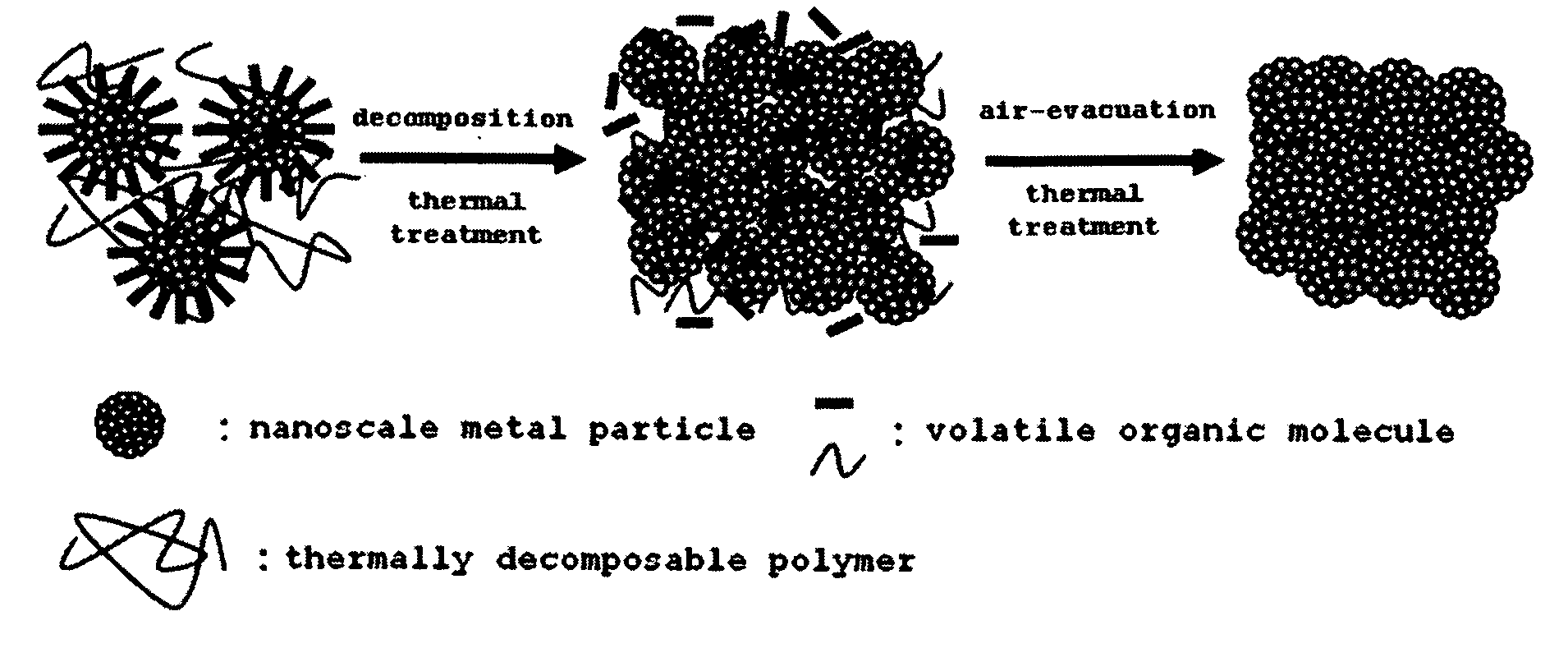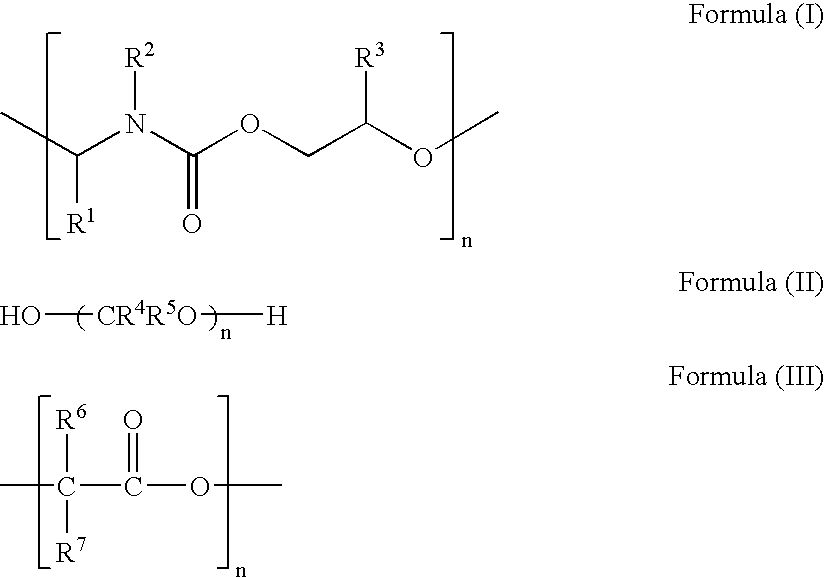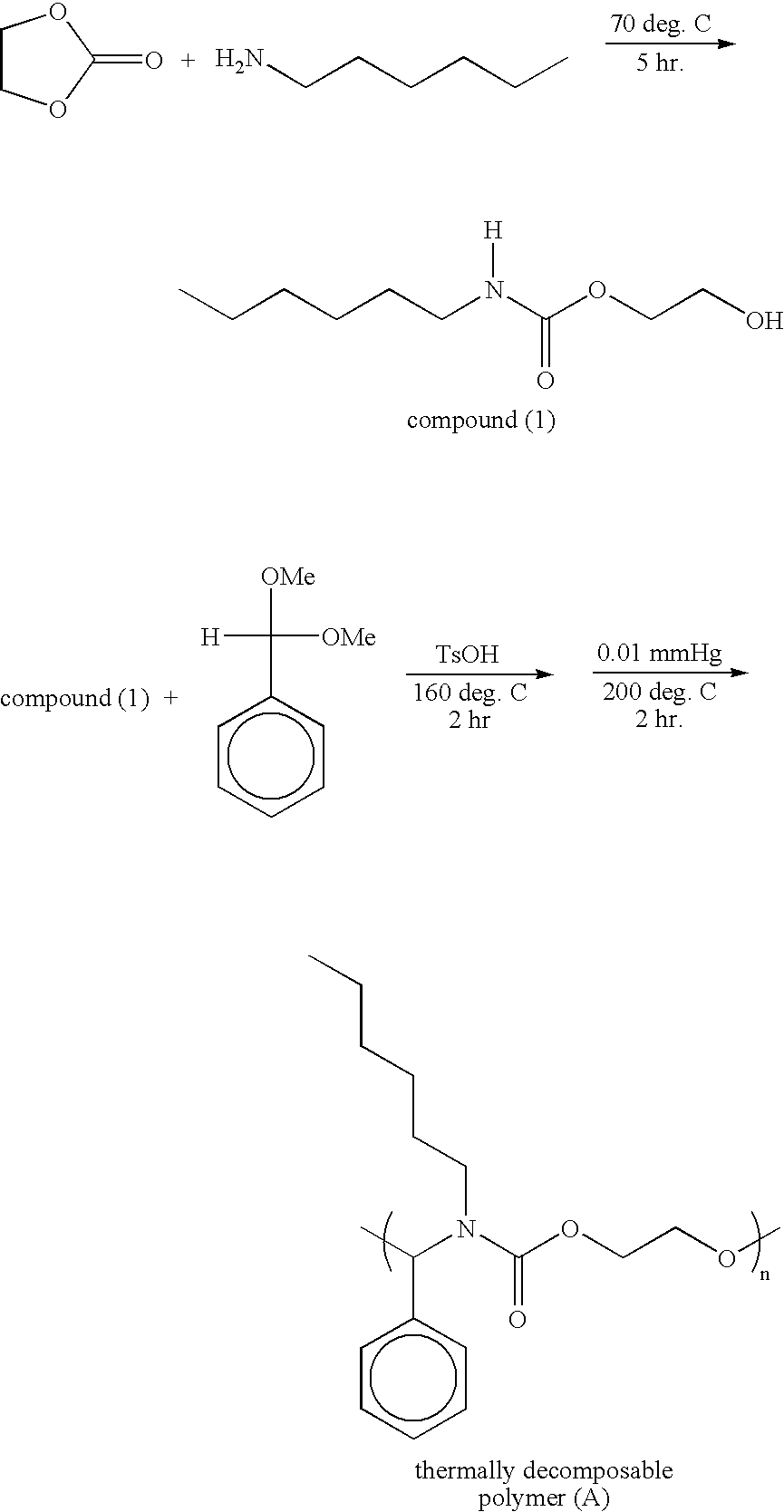Highly conductive ink composition and method for fabricating a metal conductive pattern
- Summary
- Abstract
- Description
- Claims
- Application Information
AI Technical Summary
Benefits of technology
Problems solved by technology
Method used
Image
Examples
example 1
[0026] Decanoic acid (C9H9COOH, 10 g) was dissolved in 50 ml methanol, and sodium hydroxide solution (2.4 g NaOH added in 50 ml water) was gradually added to the solution. Thus, a mixed solution was obtained after reacting 30 minutes at room temperature. Thereafter, silver nitrate (AgNO3) solution (9.8 g silver nitrate added in 50 ml water) was gradually added to the mixed solution. The mixed solution is filtered when the reaction is complete. After a drying procedure, a thermally decomposable organic silver particle (silver neodecanoate, SND), a white solid product is formed. The synthesis procedure of the thermally decomposable organic silver particle is shown as the reaction formula below:
NaOH+C9H19COOH→C9H19COONa+H2O
AgNO3+C9H19COONa→C9H19COOAg+NaNO3
[0027] Preparation of Thermally Decomposable Polymers
example 2
[0028] N-hexylamine (8.8 g, 100 mmole) and ethylene carbonate (10.12 g, 100 mmole) was mixed into a solution, and the solution is then further heated to 70° C. After reacting for 5 hours, the product was purified by vacuum distillation (128-130° C. / 0.05 mmHg) to form 2-hydroxyethyl N-hexyl-carbamate (compound I), 15.1 g (yield: 80%), which is an achromatic oily liquid. 2-hydroxyethyl N-hexyl-carbamate (compound I, 4.73 g, 25 mmole), benzaldehyde dimethylacetal (3.79 g, 25 mmole), and a catalyst of p-toulenesulfonic acid (0.05g) are mixed. Thus, the mixed solution was gradually heated to 160° C. and then reacted for 2 hours. Methanol formed in the period is then removed. Thereafter, the mixed solution was processed by vacuum distillation (0.01 mmHg) and heated to 200° C. A thermally decomposable polymer (A) (poly(N,O)acetal, PA) 5.5 g (yield: 65%) was obtained after 2 hours, which is a highly viscous oily constituent with orange-red color. Referring to the reaction formula below, the...
example 3
[0035] The thermally decomposable organic silver particle formed in the example 1 was dissolved in xylene, in addition, the thermally decomposable polymer (A) (weight-average molecular weight (Mw): 2500 g / mol) formed in example 2 and dodecylbenzenesulfonic acid (DBSA) as a catalyst were further added, to prepare a highly conductive ink composition (e), wherein the thermally decomposable organic silver particle has a weight percentage of 38 wt %, the thermally decomposable polymer (A) has a weight percentage of 4 wt %, and dodecylbenzenesulfonic acid has a weight percentage of 0.2 wt %. The weight percentage is based on the total weight of the highly conductive ink composition (e). Thereafter, viscosity and photo stability of the ink composition were further measured. The measurement result is shown in Table 1.
PUM
 Login to View More
Login to View More Abstract
Description
Claims
Application Information
 Login to View More
Login to View More - R&D
- Intellectual Property
- Life Sciences
- Materials
- Tech Scout
- Unparalleled Data Quality
- Higher Quality Content
- 60% Fewer Hallucinations
Browse by: Latest US Patents, China's latest patents, Technical Efficacy Thesaurus, Application Domain, Technology Topic, Popular Technical Reports.
© 2025 PatSnap. All rights reserved.Legal|Privacy policy|Modern Slavery Act Transparency Statement|Sitemap|About US| Contact US: help@patsnap.com



